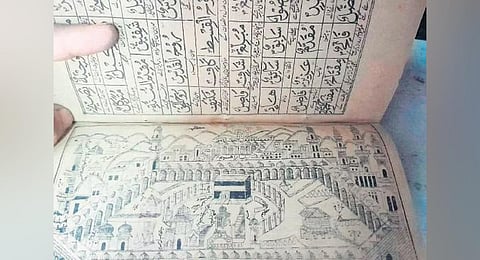

HYDERABAD: Preserving documentary heritage, which includes historical documents, manuscripts, photographs, recordings, and other forms of recorded information, offers cultural and historical continuity. Documentary heritage preserves the cultural identity of communities, nations, and civilisations. It provides a link between past, present and future generations, contributing to a more comprehensive and accurate historical narrative. Documents are also a valuable resource for researchers, scholars and educators. It supports academic inquiry across various disciplines, allowing for the development of new knowledge and insights.
This also helps educators to incorporate primary sources into teaching, offering students a direct connection to the past and fostering critical thinking skills. Sajjan Singh, a member of the Sikh Heritage Preservation and Conservation Sub Committee, SGPC, Amritsar and extensively undertaking preservation of Sikh documentary heritage in Hyderabad, explained: “We have a vast collection of documentary heritage preserved in the form of rocks, stones, clay tablets, metal plaques, wooden panels, barks, leaves, cloth, glass, ivory, bone, parchment and paper. However, most of the archival heritage is damaged due to dust, biological factors, atmospheric pollution, temperature, relative humidity, light, insects, microorganisms, improper care and negligence. Moreover, one of the major causes of the deterioration of documents is a lack of awareness among custodians and mishandling by readers. Hence, it is important to spread awareness regarding preservation of manuscripts for posterity.”
Serving as a collective memory bank for societies, documents help prevent the loss of important information and experiences that might otherwise be forgotten over time. By preserving documents, societies can develop a shared understanding of their common history and values, fostering a sense of community and cohesion.
“In order to preserve manuscripts, certain preventive measures need to be taken, such as controlling the temperature and humidity of the place where documents are kept, taking care of the light source in the room, ensuring proper storage and treatment of manuscripts, anti-termite treatment, etc.,” Singh added. He also specified that the conservation of manuscripts depends on many factors such as the material and ink used, whether it is paper or cloth and if the ink is permanent or temporary, etc.”
Sharing an example, Singh explained how the conservation of a manuscript of Sri Guru Granth Sahib ji, in an early lithographic print, was taken up by the Sikh Heritage Foundation Hyderabad Deccan in collaboration with the Salar Jung Museum at Gurudwara Sahib in Barambala. “This was in 2004. The process of conservation is called aquas treatment. It is one of the rarest copies in the world,” he said.
“We have conserved the copy in our possession with the help of advisors at the Salar Jung Museum, who suggested treating the manuscript with water. The manuscript is significant because it has the authenticity of the text. Usually, paper resizing is done but for this copy, we have kept the original size intact. There is also a small manuscript of Guru Gobind Singh ji, which was kept in his pocket while he was crossing the river Sarsa. This copy is in our possession and while preserving it, we ensured that we keep the impressions of the watermarks left as it is,” he explained.
Singh emphasised the fact that preservation depends on the type of the manuscript and each needs to be studied carefully. He also suggested that at least 10% of funds received by religious institutions could be utilised for the preservation of documents that are in possession of these centres.
Aun Mehdi, a custodian of familial, community and state-related documents, says that his family has quite meticulously stored them for generations. “Important documents were hand copied to ensure the original ones were not troubled much by way of reverting to their contents as and when required and the copied documents were attested by courts, in case the circumstances warranted to be produced and reproduced on multiple of occasions for their authenticity and possession.
Many of our original manuscripts and documents were carefully placed between butter papers. However, both the former and latter have turned pale and brittle over a period of time. The only element I cautiously added to them is to place them in transparencies so that their contents can be deciphered when required, without having to perturb their delicate integrity,” he said.
While families have been storing these documents for generations according to traditional methods such as wrapping them in red cloth, the extensive collection is impossible to handle for a single individual. On being asked whether he thinks handing over these documents to the state is a good idea, he replied, “A good chunk of our family archives, under the head ‘Alam Ali Khan’ was handed over to the state archives. Unless the archives commit to digitising these documents liberally and make them accessible without any obstacle, there is no incentive to hand them over to institutions that have remained infamous for being languid, coupled with a dearth of funds and an insensitive government who never cared that an institution like this even exists.”
He added that his last hope lies with ‘Noor Micro Films Centre,’ a centre established in Delhi in collaboration with the Iranian government and that also has helped the Telangana State to digitise some of its state archives. At a personal level, Mehdi and his younger brother photograph, index and catalogue the documents in their possession. “We assign a combination of numbers and alphabets to each folder,”
he said.